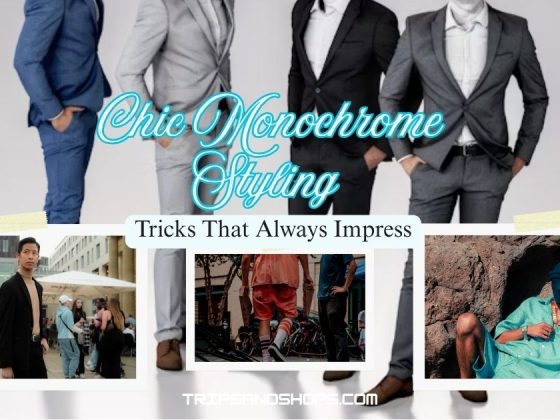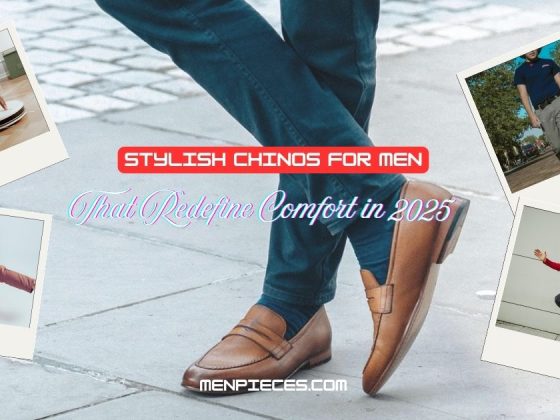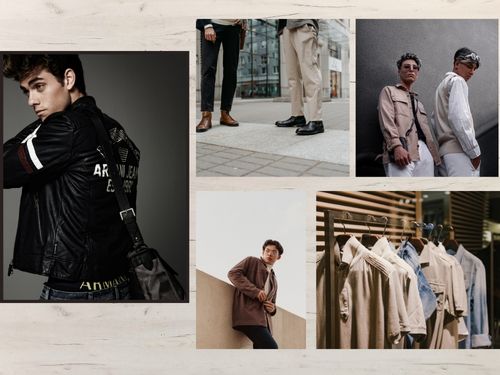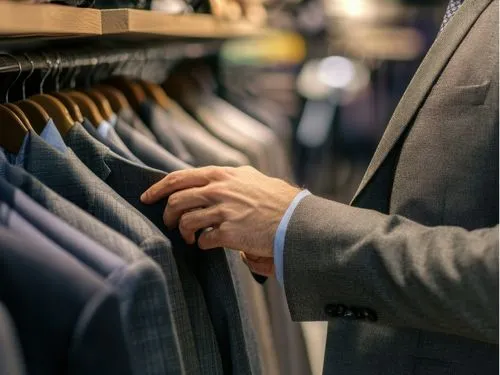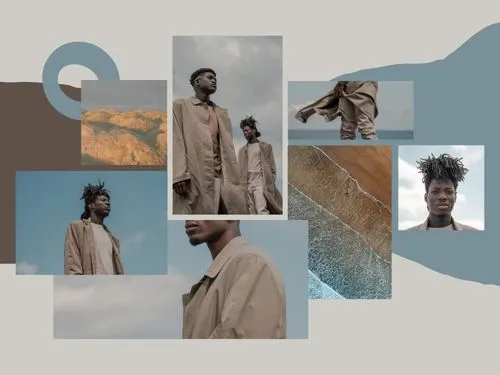Fashion has always been a reflection of culture, identity, and lifestyle. When comparing Southeast Asia with the Western world, men’s fashion tells a fascinating story of adaptation, tradition, and global influence. While global fashion houses set many of the overarching trends, the way these styles are embraced, localized, and reinvented differs widely between regions. From the humid tropics of Southeast Asia to the cosmopolitan cities of the West, men’s style evolves under the influence of climate, cultural values, and consumer preferences.
1. Climate and Environment
One of the most defining factors that separates Southeast Asian fashion from Western fashion is the climate.
- Southeast Asia: With year-round tropical weather, men often lean toward lightweight fabrics like cotton, linen, and breathable synthetics. Tailored looks exist, but they are adapted for comfort in heat—think short-sleeved shirts, looser silhouettes, and unlined blazers. Colors tend to be lighter and more vibrant, often inspired by nature, reflecting the region’s warmth and diversity.
- The West: In contrast, Western trends are influenced by seasonal changes. Winter wardrobes include coats, layered knitwear, and wool suits, while summer fashion leans toward linen shirts and shorts. This creates a cyclical fashion rhythm, where men invest in multi-season wardrobes that allow for experimentation with layering, textures, and outerwear—an option less practical in Southeast Asia.
2. Influence of Tradition and Culture
Fashion doesn’t exist in a vacuum—it blends modernity with heritage.
- Southeast Asia: Traditional clothing continues to influence modern men’s fashion. For example, the Barong Tagalog in the Philippines, the batik shirts of Indonesia, and the longyi in Myanmar showcase how heritage garments inspire contemporary designs. Many brands now modernize these traditional pieces, pairing them with Western cuts and fabrics to create hybrid styles that honor their cultural heritage while feeling contemporary.
- The West: Western menswear is steeped in centuries-old tailoring traditions, from British bespoke suits to Italian craftsmanship. These influences remain dominant, but modern Western fashion also draws heavily from streetwear, sportswear, and various subcultures, including graffiti, skateboarding, punk, and hip-hop, making it an eclectic and constantly evolving style.
3. Globalization and the Role of Social Media
The digital age shapes both regions, but the way trends are absorbed differs.
- Southeast Asia: Social media platforms like TikTok and Instagram have accelerated the adoption of global trends. Young men in Bangkok, Jakarta, or Manila might dress in oversized hoodies, cargo pants, or sneakers reminiscent of Western streetwear. Still, they style them with tropical flair—often brighter colors, local accessories, or practical modifications for the heat. K-pop and Japanese street fashion also play a significant role, giving Southeast Asian style a more eclectic and Asian-influenced edge than a purely Western one.
- The West: While also heavily influenced by social media, Western men’s fashion is often the starting point of global trends. High-fashion houses in Paris, Milan, London, and New York launch collections that set the tone for the rest of the world. Social media influencers and celebrities amplify these looks, but Western men’s fashion typically pushes boundaries earlier, with Southeast Asia following and reinterpreting them for local culture.
4. Streetwear and Casualization of Menswear
Streetwear has revolutionized men’s fashion globally, but its expression differs.
- Southeast Asia: Streetwear is one of the most dominant trends among young men in the region. Brands like A Bathing Ape (Japan) and local streetwear labels have had a profound influence on a generation. Oversized T-shirts, cargo pants, and sneakers dominate urban scenes. Southeast Asia also adds its flair with tropical prints, looser fabrics, and bright tones, making streetwear feel more relaxed compared to the often monochromatic, urban-centric looks in the West.
- The West: Streetwear evolved from an underground culture to a mainstream luxury. Collaborations like Louis Vuitton x Supreme blurred the line between high fashion and street culture. Western men tend to lean into minimalistic palettes (black, gray, navy) with structured cuts, while sneaker culture remains a cornerstone. Limited-edition drops, resale markets, and brand collaborations drive exclusivity and status.
5. Workwear and Formalwear Differences
Professional wardrobes reflect cultural expectations and climate.
- Southeast Asia: Business attire is less rigid, often leaning toward short-sleeved dress shirts, polos, or lightweight blazers. Suits are worn for high-level events but are less practical for daily wear due to heat and humidity. Instead, men focus on looking polished while staying cool, often with breathable shirts, slim chinos, or even cultural formalwear.
-
6. Color, Patterns, and Textures
Aesthetic preferences diverge significantly between the regions.
- Southeast Asia: Bold colors and patterns are widely embraced, influenced by the region’s tropical landscapes and traditional textiles. Batik prints, floral shirts, and patterned short-sleeve button-downs are standard—texture-wise, lightweight linen and airy cotton dominate.
- The West: Minimalism and neutral palettes are more dominant in men’s fashion. Monochrome outfits in black, white, and beige are highly popular. Textures like wool, cashmere, tweed, and leather are layered for colder months, allowing more experimentation with depth and structure.
7. Footwear Culture
Shoes are a global fashion language, but their importance varies.
- Southeast Asia: Sneakers dominate among youth, with global brands like Nike, Adidas, and Converse at the forefront. Sandals and slip-ons are also practical staples due to the climate. Luxury shoes, such as loafers and oxfords, are typically reserved for formal settings and are less common in everyday wear compared to those in the West.
- The West: While sneakers are also king, there’s a stronger culture of owning multiple pairs of formal and semi-formal shoes. Chelsea boots, loafers, and leather dress shoes remain popular, reflecting colder climates and a more suit-centric tradition. Sneaker resale culture is also far more established in Western markets.
8. Accessories and Grooming
The finishing touches of style show how men express individuality.
- Southeast Asia: Accessories are lighter and more practical. Baseball caps, slim crossbody bags, and sunglasses are popular. Jewelry is often subtle, though gold chains and minimalist rings are trending. Grooming trends are leaning toward K-pop influences—flawless skin, styled hair, and skincare routines are becoming increasingly mainstream.
- The West: Accessories range widely, from bold watches to statement eyewear and luxury bags. Grooming has taken a more rugged turn in some circles—beard culture, minimalist skincare, and natural looks dominate. However, urban and fashion-forward men lean into grooming regimens inspired by both European refinement and Korean skincare.
9. Sustainability and Conscious Fashion
Sustainability is shaping the future of fashion everywhere, though the pace varies.
- Southeast Asia: The conversation around sustainable menswear is growing, but affordability is a significant barrier. Thrift culture, however, is booming, with young men frequenting secondhand shops and upcycling vintage clothing. Local artisanship is also making a comeback, with brands utilizing natural dyes, eco-friendly fabrics, and ethical sourcing practices.
- The West: Sustainability is a significant focus, with fashion houses adopting eco-conscious materials, recycling initiatives, and slow-fashion movements. Thrift and vintage shopping are now mainstream, and consumers are increasingly vocal about their ethical practices. The Western market drives global innovation in sustainable textiles and practices.
The Future of Men’s Fashion: Convergence or Divergence?
While Southeast Asian and Western menswear differ, globalization is leading tois leading to growing convergence. Streetwear, minimalism, and sustainability are universal, though localized interpretations will always exist. In the future:
- Southeast Asia will continue to blend tradition with modernity, resulting in globally appealing designs that draw inspiration from cultural heritage while remaining fashion-forward.
- The West will continue to innovate with technology, materials, and high fashion, but will also increasingly look to Asian markets for inspiration, especially as K-fashion and J-fashion gain global prestige.
Ultimately, men’s fashion is no longer about East vs West—it’s about dialogue, borrowing, and remixing. What’s trending in New York today might be reinterpreted in Manila tomorrow, and vice versa. The exchange is what keeps fashion alive.
Country-Specific Spotlights in Southeast Asia
Southeast Asia is not a monolith. Each country brings its own unique cultural heritage and consumer behavior to the men’s fashion industry.
- The Philippines: The Barong Tagalog remains an important formal wear piece, but Filipino men are also heavily influenced by American culture due to historical ties. Streetwear and athleisure are extremely popular, with sneaker culture experiencing a surge in popularity in Manila. There’s also a rise in homegrown brands offering business attire suitable for tropical climates.
- Thailand: Bangkok is a fashion hub where men experiment with eclectic looks. Street fashion dominates, but Thai designers are increasingly blending traditional elements, such as silk and woven fabrics, with modern tailoring techniques. K-pop and Japanese influences are readily apparent in the styles of younger men.
- Indonesia: Batik shirts are not just traditional garments—they’ve become stylish modern menswear staples, often worn for both casual and formal occasions. Indonesian men’s fashion also leans heavily into modest wear, given the country’s Muslim-majority population, leading to creative takes on tunics, long shirts, and relaxed tailoring.
- Vietnam: Young Vietnamese men are drawn toward K-fashion and Western minimalist looks. Hanoi and Ho Chi Minh City have thriving streetwear cultures, often blending slim tailoring with casual sneakers. There’s also a growing interest in thrift and vintage shopping.
- Singapore, with its status as a global financial hub, requires a more formal business attire than in most Southeast Asian countries. Men often wear suits, though lighter fabrics are preferred. The city also boasts a robust luxury fashion market, with Western brands dominating but increasingly being challenged by Asian labels.
Bridging East and West in Men’s Fashion
The contrast between men’s fashion in Southeast Asia and the West highlights how environment, culture, and history shape what men wear. While the West has long dictated global trends, Southeast Asia is emerging as a strong player with its vibrant, eclectic, and heritage-driven styles. As the world becomes more connected, men’s fashion in both regions will increasingly influence one another, creating a richer, more diverse global fashion landscape.
